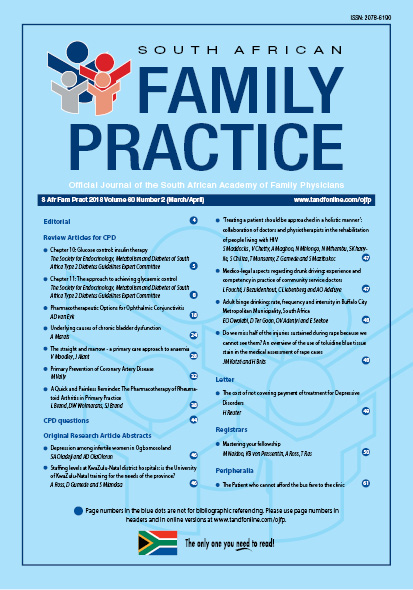Pharmacotherapeutic options for ophthalmic conjunctivitis
Keywords:
Infective conjunctivitis, Allergic conjunctivitis, Viral conjunctivitis, Bacterial conjunctivitis, Pink eye
Abstract
Conjunctivitis is a common eye condition involving inflammation and in some instances infection of the conjunctiva. In the majority of cases it is caused by adenoviruses and, to a lesser extent, bacteria. Conjunctivitis can also occur secondary to Chlamydial and Gonococcal infections and new-born infants can acquire it during the birthing process from infected mothers. Herpes simplex and Herpes zoster are the infective organisms also responsible for conjunctivitis while seasonal pollens are usually the cause for allergic conjunctivitis. Common symptoms and signs are redness, tearing, oedema of the eyelids, sensation of a foreign body and it may be accompanied by itching. Most often a purulent discharge and adherence of eyelids at awakening are indicators of a bacterial infection. Most of the uncomplicated acute cases are self-limiting. There is however a challenge in distinguishing between the various types of conjunctivitis due to the similarity in the symptoms and due to a lack of tests and prediction algorithms, thus antibiotic therapy is often incorrectly initiated. Treatment of acute uncomplicated conjunctivitis caused by adenoviruses and bacteria is mostly symptomatic. Topical eye drops and ointments are preferred to oral agents in the treatment of more severe bacterial and allergic conjunctivitis while oral agents are used in the treatment of conjunctivitis caused by Herpes simplex, Herpes zoster, Chlamydia trachomatis and Neisseria gonorrhoeae.
Section
Review Articles
By submitting manuscripts to SAFP, authors of original articles are assigning copyright to the South African Academy of Family Physicians. Copyright of review articles are assigned to the Publisher, Medpharm Publications (Pty) Ltd, unless otherwise specified. Authors may use their own work after publication without written permission, provided they acknowledge the original source. Individuals and academic institutions may freely copy and distribute articles published in SAFP for educational and research purposes without obtaining permission.

